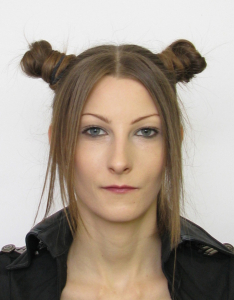Three awards for young researchers from Stroke team III
Mgr. Sandra Thalerová is looking for new methods of stroke treatment in the lab
The third award winner is Sandra Thalerová, a PhD student in biochemistry at the Faculty of Science of Masaryk University and a researcher at the Cerebrovascular Research Programme of FNUSA-ICRC. For the publication of her research findings in the field of drug combinations and their effects on stroke treatment under laboratory conditions, she was awarded the Masaryk University “Scholarship Program for the Support of Creative Activity for the Publication of Outstanding Results of Own Research”. Two years ago she was also awarded the Brno Ph.D. Talent. Sandra is part of a research group dealing with in vitro laboratory experiments, which brings together the staff of the Institute of Biophysics of the CAS and the Cerebrovascular Program of FNUSA-ICRC.
What does this recognition of your work mean to you?
Every award or invitation to give a talk is an indicator to me that there is interest in our research and that in vitro modelling has a strong place in stroke research. Also, every award increases the publicity and prestige of our team, and I’m very happy about that. The award is also my thanks for the excellent guidance of my supervisor Dr. Jan Viteček and my supervisor in the Cerebrovascular Team, Prof. Robert Mikulík.
Can you introduce us more about the excellent results of your research?
We tested the effect of a new oral anticoagulant used for stroke prevention. We investigated how it affects the effectiveness of another drug, alteplase, on ischaemic stroke (stroke caused by blockage of a blood vessel in the brain, ed.), which helps dissolve a blood clot. We wondered if this preventive medicine could improve the treatment of stroke if it occurs despite its use. However, our results did not show a possible improvement in treatment due to the interaction of the two drugs.
How are the drugs tested?
Our group is involved in the implementation of innovative in vitro model systems. We are using them to test the efficacy and other properties of agents that could improve current stroke treatments. Our models are transparent, so they offer the possibility to monitor blood clot experiments in real time. We can design them as needed and are able to simulate the properties of blood vessels based on real-world examples. In addition, in vitro models allow the use of human material (blood, plasma, cells), therefore the experimental conditions can be in many ways closer to the real situation of stroke patients compared to laboratory animals.


